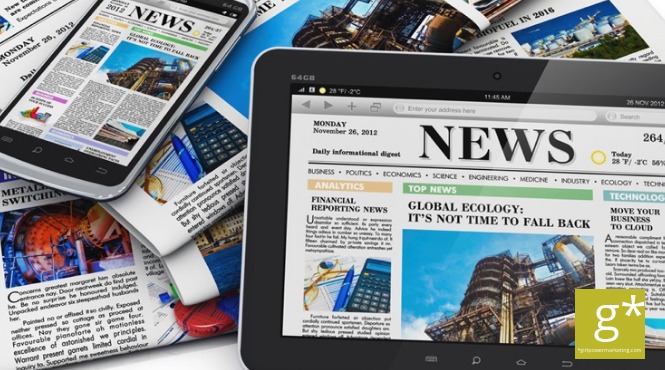How to Leverage the Changing PR Landscape in Your Brand Marketing
Back in the day, PR for brand marketing consisted primarily of press releases, articles in the daily newspaper and magazines, TV and radio spots, and a quarter-page section in the Sunday paper.
But today it’s a different world. Technology has given brands the ability to connect with potential customers in much broader ways than ever before and develop a much more integrated approach through various communications channels.
The PESO model (paid, earned, shared and owned media), identified by Gini Dietrich of Spin Sucks, gives us the opportunity to grow brands in a thoughtful, controlled way. Even better? The results are measurable at all points in the process, from beginning the awareness-building process, through the final purchase.
Paid Media
Facebook and Google ads, paid amplification, pay-per-click campaigns, sponsored influencer partnerships and print ads are all channels to get your content in front of as many people as possible in a relatively short period.
Paid media can be used effectively to reach new audiences that may not have been considered before. And a key benefit is that you have complete control at all times over your content, your budget, and even your audience.
Try amplifying select pieces of your content, and test to see which performs best. If you don’t like how your content performs, you can always adjust to suit your needs.
Earned Media
Many older media tactics still have a place in this new PR and brand marketing landscape, especially in the earned category. This is where articles in publications like USA Today, Forbes, or the Wall Street Journal, as well as on radio and TV shows can boost your brand.
But it’s not just the staff journalists at those traditional publications who can give a shout out to your brand.
Everyone has a voice today, including the staggering number of bloggers and influencers who generate online content. They can be much easier to reach through Twitter or their own blog. Even traditional reporters can be reached via their Twitter handles. And a mention on Twitter from a business reporter on HuffPost or the New York Times can be just as valuable as a full-blown article in a print publication.
Shared Media
This is where things have really changed for marketers, and definitely to your brand’s advantage. Social media has rewritten the playbook on gaining exposure for a brand. In addition to sharing your news in real time through boosted posts, you can also enjoy the free organic reach that Facebook, Instagram, Twitter, and other social platforms provide.
YouTube, Facebook Live, and Instagram Stories allow brands and influencers to connect with their audiences and share information in real time. More effectively too, as Facebook users typically spend three times as much time watching a live video as reading a regular post.
Owned Media
Perhaps the most significant change to the PR landscape in the past decade is the ability to live on the web and own your content. Search engines can now lead prospective buyers straight to your website, where your blogs, videos, eBooks, new releases, and podcasts all reside.
With owned media, you have absolute control over what is published, when, and how often. You can also control shared media from this space, pushing your published content to your social channels to drive more traffic to your site.
There are some drawbacks, so make sure your content doesn’t sound like corporate marketing speak instead of more objective and interesting storytelling.
And because PR is no longer just about the written word, it’s essential that you visually showcase your brand as well. It will be far more interesting to your end consumer, and your visuals will make the media stories for your brand marketing much more interesting.
Ultimately, nothing has changed, and yet everything is different. We’re still telling brand stories, communicating the benefits of products and services, and reaching out to consumers to let them know we understand their challenges.
Not every media type will fit into every PR or brand marketing program. But the media landscape will continue to shift, and new trends will come on the scene.
It’s our job to continue to be diligent in our research, remain flexible in our approach – and always be open to new ways for sharing our stories in a way that positively connects with our audiences.
If you need help navigating the new PR and brand marketing landscape, don’t hesitate to reach out.

